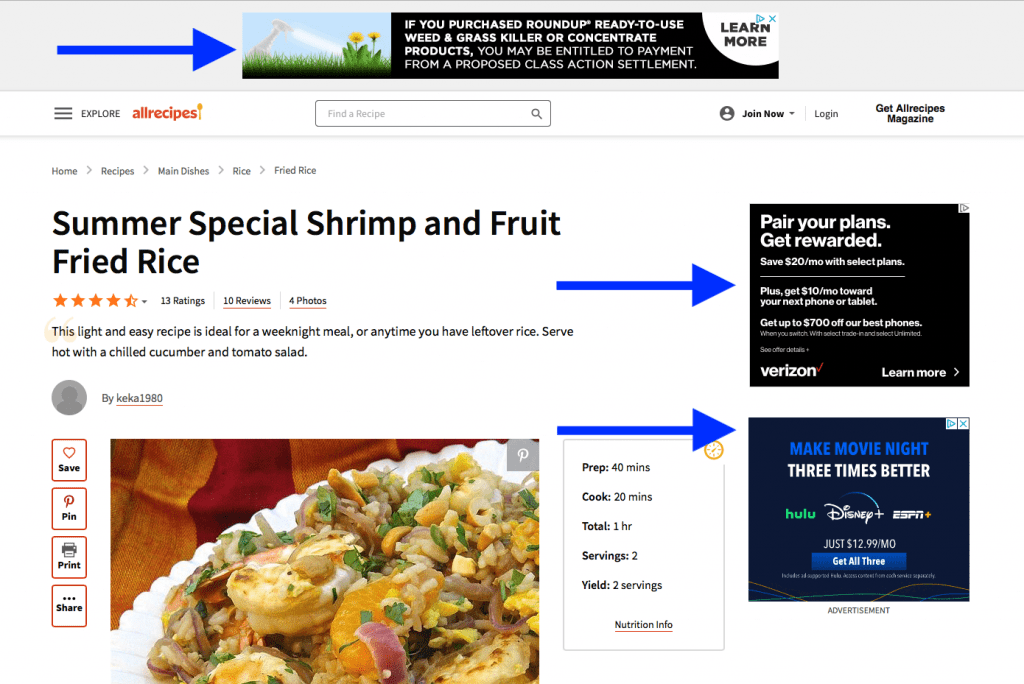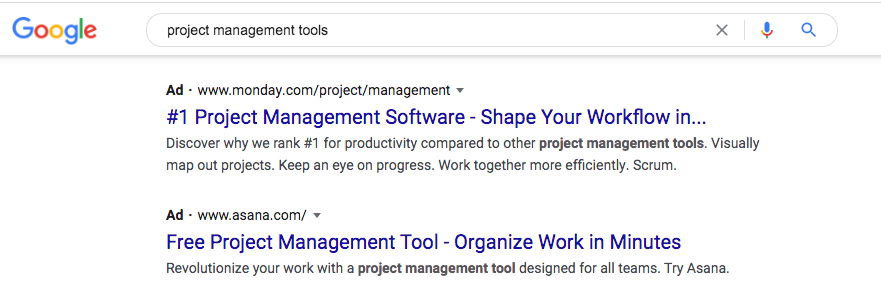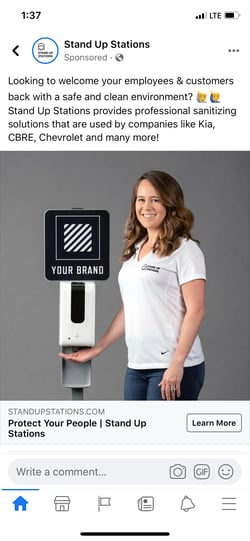Paid advertising is often a great way to increase traffic and sales as you’re growing and sustaining your online presence. But the lingo can be a little confusing if you aren’t used to hearing it every day. To help, here’s Lake One’s B2B online advertising glossary, including a breakdown of the basic types of paid media to help identify which ones might be a fit for you.
Types of Paid Media
1) Retargeting Ads
Retargeting is a form of paid media that serves ads to users who have already engaged with your site or social media page. The goal of retargeting is to re-engage users with your brand.
Because retargeting works via cookie tracking, it allows you to target your ads to a specific behavior. For instance, you can retarget an ad to people who abandoned their online shopping carts or viewed a specific webpage. This can be especially helpful for B2B buyers since buying cycles tend to be long.

Pros to retargeting: Great for keeping your brand top-of-mind and moving users further along the funnel.
Cons to retargeting: Not a strategy for acquiring new visitors.
2) Display Ads
Display ads, or sometimes called Banner Ads, are static image ads. These are the ads that you see when browsing the web, outside of social media or Google. Display ads can be run as a form of retargeting, so this is why you might see an ad for the eCommerce site you just visited pop up on your fav news site. Display ads can also be interest-based: i.e. getting an ad for allrecipes.com after browsing a few different sites for summer dinner planning.
Display ads on Google all run through what’s called the Google Display Network. This is a vast network of over 2 million websites that are connected to Google and able to display your ad. Google estimates that this network is able to reach up to 90% of the internet.
Here’s are some examples of display ads not based on retargeting.

Pros to Display Ads: Retargeting through display ads can be especially effective when retargeting.
Cons to Display Ads: Display ads usually have low click rates and are typically used for awareness campaigns.
3) Pay Per Click Ads
Pay per click, or PPC, is what the industry calls advertising within search engine results. These are the “paid results” you see on Google (or Yahoo or Bing, etc.) before the organic search results display. You will only pay for an ad if it gets clicked, and the amount you pay will vary greatly depending on your targeting.

Pros to PPC: Effective way to get to the top of the search engine results and generate traffic. For B2B, traffic generated from PPC can be highly targeted.
Cons to PPC: Can be expensive depending on your targeted keywords and often requires a higher level of expertise to be effective.
4) Social Ads

Socials ads are advertising served on any social media platform. Facebook and Instagram ads can be managed together while Twitter and LinkedIn need to be done directly through their ad serving platforms. (Here are some tips on LinkedIn advertising.) Depending on your audience’s social media savviness, advertising on these platforms can be hugely successful.
Here’s an example of a retargeting social ad. These shoes and the cellphone case are specific products I’ve reviewed recently.
Pros to Social Ads: Platforms range in expense but are generally cheaper than other options plus offer the ability to target very niche groups, especially when using LinkedIn for B2B online advertising purposes.
Cons to Social Ads: Focus is typically on visuals of ads and some platforms, like Instagram, have high aesthetics expectation. It can involve trial and error when getting started.
Targeting Options
1) Mobile
Ads served just to mobile users and not to desktop.
2) Native
Ads that blend into the environment and do not look like ads; typically on social media.
3) Geofencing
Targeting an ad to a specific geographical area- can be down to specific zip codes. If your company only services other organizations within a specific radius, geofencing your ads may be a smart move.
4) Dayparting
Only serving an ad during specific times of the day (such as business hours) to increase targeting based on persona search habits. This can increase relevance and click-throughs when talking about B2B online advertising specifically.
5) Exact Match
In PPC ads, exact match ads are only served when your exact keywords are searched (e.g. exact match for “Best revenue generation firm Twin Cities” won’t serve an ad for “Best revenue generation firm”).
6) Phrase Match
In PPC ads, phrase match ads are served when there is a contextual match for your keywords. (e.g. phrase match for “Best revenue generation marketing firm” will not serve an ad for “Best revenue generation marketing firm Minneapolis ”).
7) Bid
The budget you’re willing to pay for your ad to display. Bids can be set by click, impression, and/or on a daily/monthly basis.

Paid Media KPIs
1) Impressions
How many people have seen your ad. Unique Impressions are the individual people who viewed your ad vs Total Impressions which counts each and every view independently, even if one person viewed your ad more than once.
2) Click or Clickthrough
The total clicks on your ad.
3) Clickthrough Rate
The percentage of impressions that received a click.
4) Cost per Click
How much you’re paying on average to receive a click on your ad.
5) Cost per Acquisition
The average cost you’re paying for a goal to be completed (a goal can be a purchase, a form submitted, etc.)

